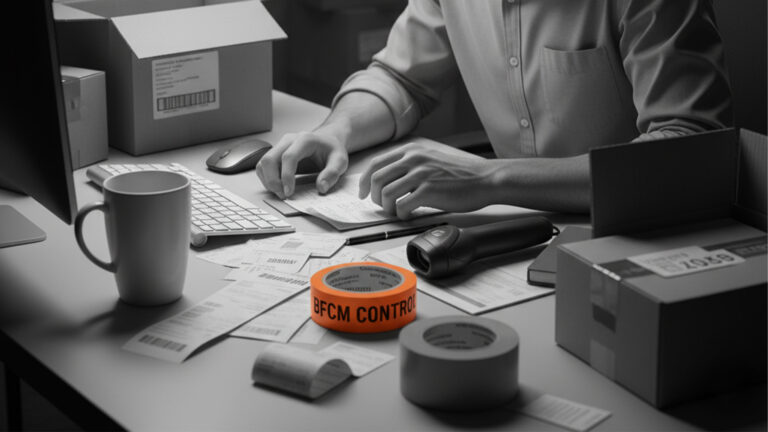What is Chargeback Representment and How Does it Work?

Imagine this: It’s been a busy month, with revenue rolling in and orders shipping out. You’ve got marketing campaigns to set up, recent hires to onboard, a supplier who can potentially help you lower costs, and more. Everything hums but suddenly you get a message from your acquiring bank: a customer has requested a chargeback, do you accept or do you want to fight it? Hundreds of dollars in revenue are at stake, and you’ll have to pay chargeback fees. Your acquirer also lets you know that your chargeback ratio is rising, and soon, you might be subject to additional penalties, including rising payment processing fees.
Thing is, you remember the sale and the customer, and you know you did everything right. The chargeback, you’re sure, is fraudulent. So instead of accepting it lying down, you opt to fight it through the chargeback representment process. During this process, you will “re-present” the transaction and strive to prove that it was legitimate and that you fulfilled your end of the bargain. Chargeback representment can be exceptionally useful for merchants, allowing them to fight fraud and protect revenues. And while the process is rather involved, by using ChargebackHelp’s tools, you can streamline much of the process.
How to Recover Revenue: Chargeback Representment
We’ll cover the representment process step by step in a second, but it’s worth noting that chargeback representment ultimately starts with a choice made by the merchant: Do you accept the chargeback, meaning you won’t contest it? Or will you fight it and try to prove that the transaction was legitimate?
If you accept the chargeback, representment never kicks off. Some merchants accept chargebacks without fighting any of them, even if they suspect that the cardholder is engaging in fraud. However, fighting chargebacks through representment provides some major benefits.
First, fighting chargebacks can protect your revenues. From a merchant’s point of view, a chargeback basically functions like an unauthorized refund. The cardholder will get their money back and the funds will come out of the merchant’s account. At the same time, the cardholder may not be obligated to return the products or services in question. As such, merchants not only lose revenue, but also inventory, labor, and other resources.
Further, companies that are quick to grant fraudulent chargebacks may become favored targets for criminals. If a fraudster realizes that one merchant is unlikely to contest a chargeback, while another merchant will actively fight it through representment, they’ll pursue the easier target. By fighting chargebacks, merchants can build a strong reputation and may reduce overall fraud levels in the market, which benefits pretty much everyone (save criminals, of course).
The Chargeback Representment Process Explained
Now that you understand the benefits of fighting chargebacks through representment, let’s take a closer look at how the process works.
1. Pre-Representment- The Cardholder Contacts Their Bank
Before the representment phase even starts, a cardholder will contact their card issuing bank to dispute a charge. The bank will review the claim and then decide whether to file a chargeback on behalf of their cardholder. In some cases, such as obvious fraud, the card issuer might file for a chargeback before their cardholder even contacts them.
Before filing a chargeback, the card issuer may contact the merchant and/or their acquiring bank to see if the issue can be cleared up without needing to file a chargeback. Many merchants use chargeback alert systems, which provide them with a heads-up of a forthcoming chargeback. This gives the merchant a chance to head off the dispute, thus avoiding chargeback fees and a rising chargeback ratio.
We’ll assume that the chargeback goes forward, however, to illustrate how the whole process starts. After the initial review, if a chargeback is filed, the cardholder will be granted a provisional credit equal to the amount in dispute. This ensures that the cardholder’s finances aren’t unjustly disrupted.
2. Pre-Representment- The Card Issuer Contacts the Merchant’s Acquiring Bank
Merchants partner with acquiring banks that receive and process payments on their behalf. The card issuer will send the merchant’s acquiring bank a chargeback notification. This notification will contain a reason code, which will provide a basic description of why the chargeback is being filed. The acquiring bank will provisionally debit the merchant’s account and pass the funds back to the issuing bank to cover the credit extended to the cardholder. This debit may later be reversed.
3. Pre-Representment- The Acquiring Bank Passes Info to the Merchant
The acquiring bank will send the chargeback notification to the merchant. The merchant will then review the notification. The merchant may pull up information on the transaction via their payment and sales portals.
Some chargebacks are essentially unwinnable. In these cases, the merchant should typically accept the chargeback. While this is far from ideal, it’ll save the merchant from further headaches.
Examples of unwinnable chargebacks include:
-
Purchases made with a stolen credit or debit card.
-
Merchant errors, such as forgetting to ship goods.
-
Failing to get Card Security Codes for card-not-present transactions.
You’re almost certainly going to lose disputes in the above cases. (Also, the list is not exhaustive.)
There are situations in which merchants can win chargeback disputes, including when the cardholder engages in fraud. Let’s say someone purchases a pair of shoes with his credit card. The shoes arrive in mint condition, are a perfect fit, and otherwise the customer is happy, but he files a chargeback anyway, claiming the order never arrived. Why would the cardholder do this? Quite simply, if the bank authorizes the chargeback, he can score a free pair of shoes. >
In such situations, it’s crucial to fight the chargeback through representment. If a merchant can find evidence, such as signed shipping receipts or even photos of the individual wearing shoes on social media, the merchant could win the dispute by going through the representment process. Further, as mentioned earlier, the merchant can build a reputation of proactively fighting fraud.
4. The Merchant Fights the Chargeback and Representment Starts
If a merchant decides to fight the chargeback, the representment process officially kicks off. The merchant will have an opportunity to write a rebuttal letter. In this letter, the merchant will put forward their argument that the transaction was legitimate and that they fulfilled the terms of the purchase.
The merchant can provide evidence, including:
-
Shipping receipts
-
Earlier correspondence with the customer
-
IP addresses
-
Product descriptions
The rebuttal letter must be filed within specified timeframes. Merchants have only a matter of days or weeks to get their rebuttal together. Fortunately, modern dispute management platforms make it easier to track dates as well as gather and submit the rebuttal package.
5. The Merchant Submits the Rebuttal Package to the Acquiring Bank
The rebuttal letter and evidence together make up a rebuttal package. The merchant will pass this package to their acquiring bank. The acquiring bank will then pass the package to the card-issuing bank.
6. The Card Issuer Makes a Ruling
The card issuer will review the evidence submitted by the merchant as well as evidence submitted by their cardholder. The card issuer will then decide whether to approve or deny the chargeback. If the chargeback is approved, the provisional credit provided to the customer will become permanent. If the chargeback is rejected, the credit is reversed, and the money is returned to the merchant.
Second Chargebacks Explained
If either party is dissatisfied with the outcome of the chargeback, they can file a second chargeback. In this case, the representment process will start over. To win a second chargeback, the merchant will need to present compelling new evidence. If you present only the same evidence and argument again, you’ll almost certainly lose.
Card Network Arbitration
Following a second chargeback, if either party is dissatisfied with the outcome, they can ask the card network to step in and review the case. Card networks include Visa, Mastercard, Discover, and American Express. The network will review the transaction and evidence from both sides before making a final ruling. The loser will have to pay card network arbitration fees, which cost hundreds of dollars.
In extreme cases, even after losing card network arbitration, the merchant can take the cardholder to court.
Streamlining the Chargeback Representment Process
Fighting chargebacks can be rather involved. The good news is that ChargebackHelp offers tools that make chargeback representment easier. Additionally, we offer tools that merchants can use to prevent chargebacks altogether. When possible, it’s best to avoid chargebacks in the first place. However, if fraudsters are targeting your business, it’s crucial to fight back via representment to protect your bottom line and build a strong reputation and anti-fraud company culture.






